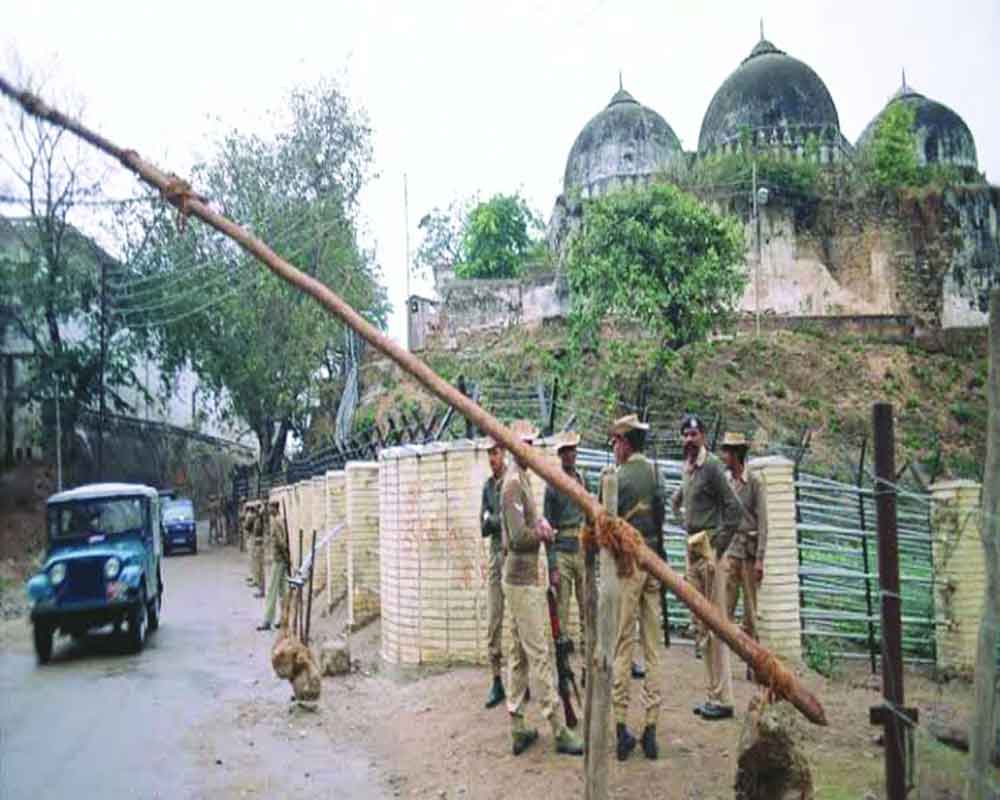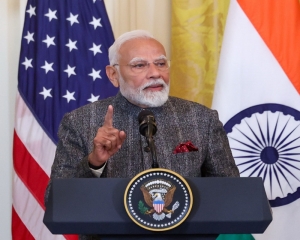The Supreme Court’s landmark judgment on the disputed site in Ayodhya rests on historical evidence; the gains of which are civilisational
A learned member of the five-judge Bench (not Constitution Bench) wisely collated the evidence regarding Sri Ram’s birthplace and appended it to the Supreme Court’s verdict of November 9, granting the disputed site to Ram Lalla Virajman. The 116-page addendum highlights the Vishwa Hindu Parishad’s (VHP) gigantic efforts to collect every scrap of evidence to legally establish Hindu belief in the birthplace of Vishnu’s avatar. The evidence is compelling. Critics, who allege that the judgment privileged one community, have not read the 1,045-page document.
As the dispute centres on the destruction of the Ram Janmabhoomi temple at Ayodhya by Babur’s general, Mir Baqi, evidence proving the sacredness of the shrine prior to 1528 is critical. The Janma Sakhies (biographies) of Guru Nanak Dev show he visited Ayodhya in 1510-1511 AD, before Babar’s invasion of India. Later, Guru Tegh Bahadur and his son, Guru Govind Singh, also visited the temple at Ayodhya. Though the Janma Sakhies do not identify the exact place of the Janmabhoomi, Guru Nanak’s visit shows that pilgrims were visiting Ayodhya prior to the temple’s destruction. Thus, the faith and belief of Hindus regarding the location of Lord Ram’s birthplace, as asserted in scriptures and sacred books, including Valmiki Ramayana and Skanda Purana, is not groundless.
During emperor Akbar’s reign (1556-1605), Tulsidas composed the Ramcharitmanas (1574-75). The Balakanda shows Brahma urging Vishnu to save the gods, sages, gandharvas and Earth from Ravana’s terror; Vishnu promises: “Fear not, o sages, Siddhas and Indra; for your sake I will assume the form of a human being. In the glorious solar race, I shall be born as a human being along with my part manifestations.” (Doha 186-7) Vishnu grants a boon to sage Kasyapa and his wife Aditi to be born in Ayodhya as Dasaratha and Kausalya; Vishnu would take birth in the form of four brothers, “the ornament of Raghu’s line.”
Akbar’s biography, Ain-i-Akbari, mentions Ayodhya as the residence of Ramachandra and one of the holiest places of antiquity. Traveller William Finch visited India from 1607 to 1611 AD and mentioned the ruins of Ramachandra’s castle.
Father Joseph Tieffenthaler visited India between 1766 and 1771 AD and found in Oudh (Awadh) a famous place called Sita Rasoi on a mud hill. Emperor Aurangzeb got the fortress called Ramcot (Ramkot) demolished and a Muslim mosque, with triple domes, constructed at the same place. Tieffenthaler recounts that some said the masjid was constructed by “Babor” (Babur) and 14 black stone pillars of five span high from the fortress are visible there; 12 support the interior arcades of the mosque. He describes the bedi (cradle) of Ram and says Aurangzeb or Babur razed the temple “to deny the noble people, the opportunity of practicing their superstitions”. However, the people “go around three times and prostrate on the floor.” This is clear evidence that Hindus at the time of Tieffenthaler were worshipping the janamsthan as a deity.
The East India Gazetteer of Walter Hamilton (1828) notes that pilgrimage to Oudh are chiefly by the Ramata sect. Montgomery Martin in History, Antiquities, Topography and Statistics of Eastern India (1838), mentions the glory of Ayodhya. Edward Thornton’s Gazetteer of India (1854) and Gazetteer of the Territories under the Government of the East Indies Company of the native States on the Continent of India (1858) gives details of Oudh.
Mirza Jaan’s Hadith-e-Sehba (1856) states, “The above mentioned place is called seat of father of Lord Rama. Places of idol worshiping situated here were demolished…The place of worship is called the birthplace of Lord Rama and the place which is adjacent to it is called “Sita Ki Rasoi”…At that place, Babar Shah got constructed a very big masjid under the supervision of Sayyad Musha Ashiqan in the year 923 Hijri and its history is still maintained. Today, the above-mentioned “Sita Ki Rasoi” is called the “masjid.” The learned judge observed, “The book candidly accepts that at the janamsthan of Lord Ram, (a) mosque was constructed by Babar.”
In 1858, the British Government annexed Awadh, after which all official reports, correspondences and orders cite the “Mosque” as “Mosque Janma Sthan.” The Historical Sketch of Tehsil Fyzabad, Zillah Fyzabad by P Carnegy, Officiating Commissioner and Settlement Officer of Ayodhya and Fyzabad (1870), states that Ayodhya is to Hindus what Mecca is to the Mohammedans and Jerusalem to the Jews. Carnegy categorically stated that at the place of janamsthan, emperor Babar built a Mosque, which still bears his name, in AD 1528. These facts are repeated in several subsequent Gazetteers.
The report of the Archaeological Survey of India (ASI) of North West Provinces and Oudh (1889) states, “The old temple of Ramachandra at janamsthanam must have been a very fine one, for many of its columns have been used by the Musalmans in the construction of Babar’s masjid.” Alois Anton Fuhrer’s report of the ASI (1889), The Sharqi Architecture of Jaunpur; with Notes on Zafarabad, Sahet-Mahet and other places in the North-Western Provinces and Oudh, states that Babar’s Masjid at Ayodhya was built on the very spot where the old temple janamsthan of Ramchandra was standing. Fuhrer reiterates this in Monumental Antiquities and Inscriptions in the North-Western Provinces and Oudh (1891). Obviously, Prof BB Lal’s excavations followed ASI precedents.
The Gazetteer of Bara Banki, Vol 48 (1921), mentions that in 1853, the Bairagis seized the janamsthan temple land (pg 169), prompting Muslims led by Amir Ali, to march towards Ayodhya. They were intercepted by Col Barlow of the First Regiment of Oudh; the regiment was wiped out and Amir Ali and many others were killed.
On November 30, 1858, Syed Mohammed Khatib Moazzim of the Babri Mosque complained that one Nihang Singh had constructed an earth chabutra (platform), written “Ram Ram” inside the mosque, and was conducting havan (rituals) there. There are several pleas by mosque officials for the removal of the chabutra. In 1866, Bairagis placed an idol inside the premises. In 1877, the Deputy Commissioner, Ayodhya, granted permission to Khem Das, Mahant, janamsthan, to open the door in the mosque’s northern wall to give Hindus a separate route to the site. In 1934, a dome was damaged in a riot, which the administration got repaired.
These accounts prove that Hindus continuously struggled to access and worship the site; hence the Sunni Wakf Board could not establish possessory rights over it. The judgment rests on historical evidence; the gains are civilisational.
(The writer is Senior Fellow, Nehru Memorial Museum and Library; the views expressed are personal)



























